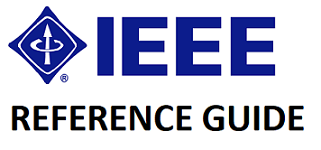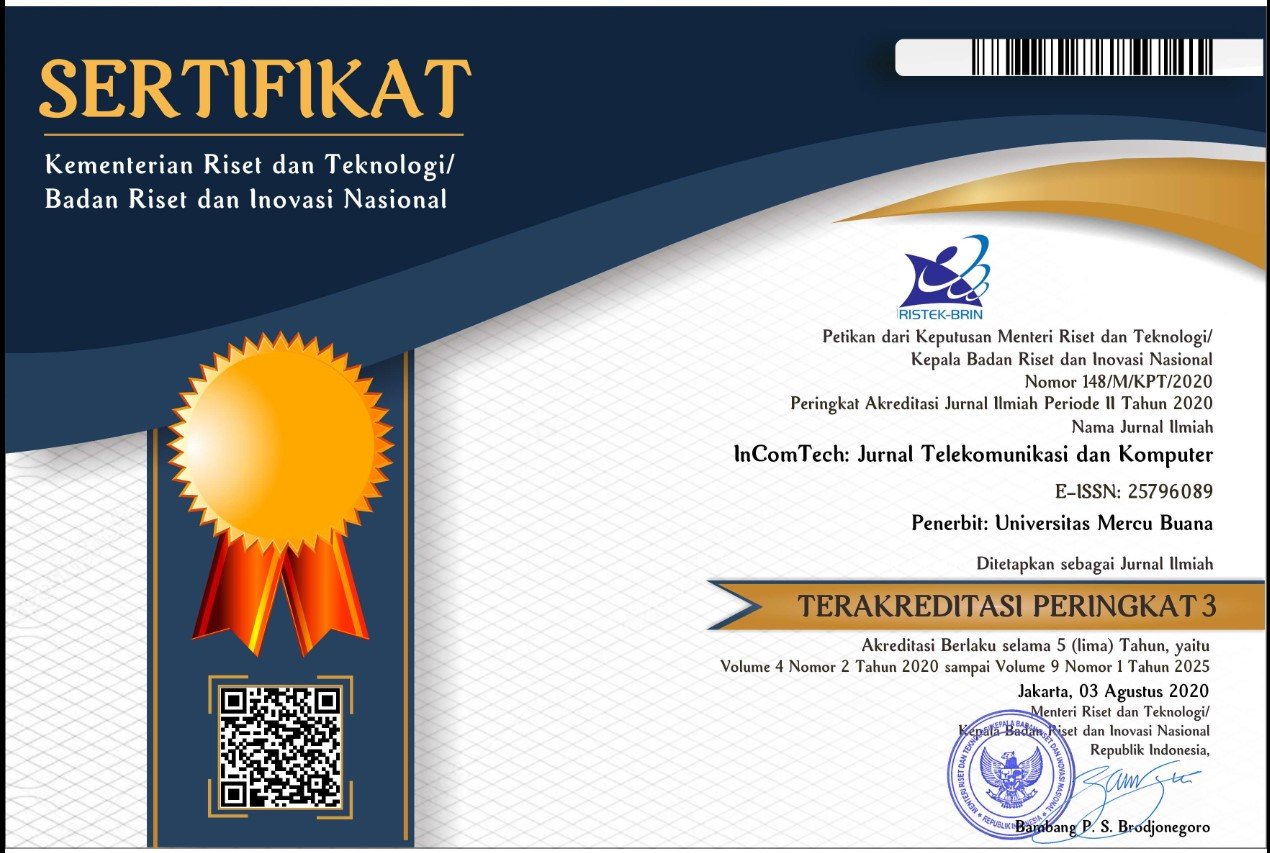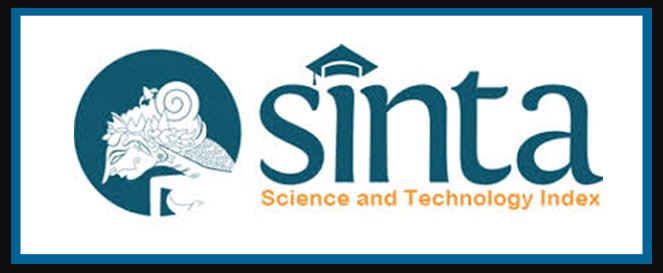Automatic Water Desalination Device using Sugeno Fuzzy Logic (Case Study: Tangkil Coast)
Abstract
Water desalination is the process of making fresh seawater or the process of making fresh water from salt water. This study uses a thermal desalination process because the salt content produced is less than the results from membrane desalination. This fuzzy method also has several variations in its application. The fuzzy Sugeno method used in this study differs from other methods, that is, with this method the results are in the form of constants or linear equations so that they can automate the desalination process. Tangkil Island is used as the object in this case study because it is a center for family tourism but has difficult access to fresh water. This study tested the results of desalination water by using a salinity measuring instrument with the type of salinity-615 as the standard for reading salt levels. The comparison results have an error value of above 50% due to the difference in the reading digits of the salinity-615 tool, which only has a value of 1 digit behind the comma, so that the results compared with the salt level sensor (embedded), which can read 3 digits behind the comma, have a high error percentage. The results of the tests carried out using Matlab with the actual conditions at the temperature, humidity, and water level observed that the desalination process runs automatically. From the results of these tests, there are very large differences in the calculation of the evaporation rate. The temperature and humidity factors can change at any time, which causes very large differences from the calculation results. In line with the increase in temperature and decrease in humidity, the evaporation process will be faster but will experience a slowdown in the evaporation process if the opposite occurs.
Keywords
Full Text:
PDFReferences
S. Asiyah, M. G. Rindarjono, and C. Muryani, “Analisis Perubahan Permukiman dan Karakteristik Permukiman Kumuh Akibat Abrasi dan Inundasi di Pesisir Kecamatan Sayung Kabupaten Demak Tahun 2003 – 2013,” J. GeoEco, vol. 1, no. 1, pp. 83–100, 2015.
I. F. Ashari, “Implementation of Cyber-Physical-Social System Based on Service Oriented Architecture in Smart Tourism Case Study : Bandung Natural Tourism,” J. Appl. Informatics Comput., vol. 4, no. 1, pp. 66–73, 2020.
Abdullah, “Sistem Deteksi Dan Monitoring Kondisi Kadar Kepekatan Asap Dengan Sensor Asap Dan Camera Tracker,” Ilmu Fis. dan Teknol., vol. 2, no. 1, pp. 1–7, 2018.
P. a. Montagna, T. a. Palmer, and J. Beseres Pollack, “Hydrological Changes and Estuarine Dynamics,” Hydrol. Chang. Estuar. Dyn., vol. 8, no. 1, pp. 5–22, 2013, doi: 10.1007/978-1-4614-5833-3.
I. F. Ashari and V. Adhelia, “Expert System and IoT for Diagnose of Feline Panleukopenia Virus Using Certainty Factor,” Matrik J. Manajemen, Tek. Inform. dan Rekayasa Komput., vol. 21, no. 2, pp. 451–462, 2022, doi: 10.30812/matrik.v21i2.1517.
I. F. Ashari, M. D. Satria, and M. Idris, “Parking System Optimization Based on IoT using Face and Vehicle Plat Recognition via Amazon Web Service and ESP-32 CAM ( Case Study : Institut Teknologi Sumatera ),” vol. 11, no. 2, pp. 137–153, 2022.
C. B. Rayendra, R. Ridwan, and T. Mulyanto, “Analisis Pipa Collector Menggunakan Simulasi CFD Teknologi Sistem Desalinasi Berbasis Solar Concentrator,” J. METTEK, vol. 6, no. 2, p. 85, 2020, doi: 10.24843/mettek.2020.v06.i02.p02.
M. A. Azis and N. Fajaryati, “Reosquido Desalinasi Metode Evaporasi dengan Ultraviolet Berbasis Mikrokontroller,” Elinvo (Electronics, Informatics, Vocat. Educ., vol. 3, no. 2, pp. 38–47, 2018, doi: 10.21831/elinvo.v3i2.20885.
A. Astuti and Z. Efendi, “Perancangan Sistem Desalinasi Air Laut Menggunakan Multi Sel Elektroda Capacitive Deionization (CDI) Berbasis Karbon Aktif Tempurung Kemiri,” Positron, vol. 10, no. 1, p. 51, 2020, doi: 10.26418/positron.v10i1.37526.
Y. Januardi, M. Rosi, and I. P. Handayani, “Sistem Desalinasi Air Laut Menggunakan Prinsip Capacitive Deionization ( Cdi ) Berbasis Karbon Aktif Sea Water Desalination System Using Carbon Based Capacitive Deoinization ( Cdi ),” e-Proceeding Eng., vol. 3, no. 2, pp. 2047–2053, 2016.
A. Sujiwa and S. Rochman, “Pengembangan Sistem Kontrol Serta Monitoring Suhu dan Volume Air Berbasis Web Pada Perangkat Desalinasi Air Laut,” Semin. Nas. Has. Ris. dan Pengabdi., vol. II, pp. 1–9, 2019.
A. Ahmad, “Penerapan Sistem Inferensi Fuzzy Dengan Metode Sugeno Dalam Memperkirakan Produksi Gula,” Semin. Nas. Pendidik. Mat., vol. im, no. 2007, pp. 524–531, 2018.
I. F. Ashari, R. Banjarnahor, and D. R. Farida, “Application of Data Mining with the K-Means Clustering Method and Davies Bouldin Index for Grouping IMDB Movies,” vol. 6, no. 1, pp. 7–15, 2022.
I. F. Ashari, “Graph Steganography Based On Multimedia Cover To Improve Security and Capacity,” in 2018 International Conference on Applied Information Technology and Innovation (ICAITI), 2018, no. April 2019, pp. 194–201.
I. F. Ashari, A. J. Aryani, and A. M. Ardhi, “DESIGN AND BUILD INVENTORY MANAGEMENT INFORMATION SYSTEM,” vol. 9, no. 1, pp. 27–35, 2022.
I. F. Ashari, M. Alfarizi, M. N. K, and M. A. H, “Vulnerability Analysis and Proven On The neonime . co Website Using OWASP ZAP 4 and XSpear,” J. Teknol. Komput. dan Sist. Inf., vol. 5, no. 2, pp. 75–81, 2022.
R. Hayami, J. Al Amien, and D. N. Ichsan, “Implementasi Metode Fuzzy Sugeno pada Sistem Keamanan Ruangan Menggunakan Sensor Ultrasonik Berbasis Mikrokontroller,” INTEK J. Inform. dan Teknol. Inf., vol. 4, pp. 32–38, 2021.
I. Langmuir, “The relation between contact potentials and electrochemical action,” J. Franklin Inst., vol. 182, no. 1, p. 35, 1916, doi: 10.1016/s0016-0032(16)90717-8.
S. Bhattarai and L. Nath Mishra, “Theoretical Study of Spherical Langmuir Probe in Maxwellian Plasma,” Int. J. Phys., vol. 5, no. 3, pp. 73–81, 2017, doi: 10.12691/ijp-5-3-2.
Ahmad Fausan, B. I. Setiawan, C. Arif, and S. K. Saptomo, “Analisa Model Evaporasi dan Evapotranspirasi Menggunakan Pemodelan Matematika pada Visual Basic di Kabupaten Maros,” J. Tek. Sipil dan Lingkung., vol. 5, no. 3, pp. 179–196, 2021, doi: 10.29244/jsil.5.3.179-196.
DOI: http://dx.doi.org/10.22441/incomtech.v12i2.15158

This work is licensed under a Creative Commons Attribution-NonCommercial 4.0 International License.
Publisher Address:
Magister Teknik Elektro, Universitas Mercu Buana
Jl. Meruya Selatan 1, Jakarta 11650
Phone (021) 31935454/ 31934474
Fax (021) 31934474
Email: [email protected]
Website of Master Program in Electrical Engineering
http://mte.pasca.mercubuana.ac.id
pISSN: 2085-4811
eISSN: 2579-6089
Jurnal URL: http://publikasi.mercubuana.ac.id/index.php/Incomtech
Jurnal DOI: 10.22441/incomtech

Ciptaan disebarluaskan di bawah Lisensi Creative Commons Atribusi-NonKomersial 4.0 Internasional
The Journal is Indexed and Journal List Title by:













